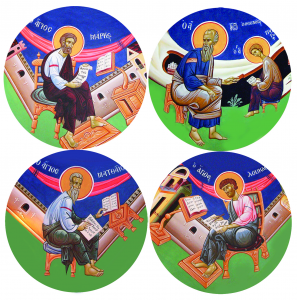The Creed Expresses the Received Apostolic Teaching
Throughout the Christian era, a special place has been given to a brief confession of what the Church has always believed, the Creed of Nicaea-Constantinople (or the “Nicene Creed,” as it is popularly known.) The Nicene Creed developed as a way to faithfully convey the teachings and practices of Jesus Christ and his Apostles and to serve as a pledge for the faithful to believe and worship according to those teachings. In the fullness of meaning taken from the Creed’s original Greek text, it is best understood as the “Symbol of Faith,” implying “that which holds together, unites, and joins,” and the “basis of common experience of God in faith.” Therefore, the Symbol expresses all the truths that the Church believes are essential for mankind, for our fullness of life, and for our salvation from sin and spiritual death.
In the earliest days, the Christian life of the new adult believer began when she came before her local bishop, who with his hand made the sign of the cross on her forehead, thus “marking” her for Christ. She had come to God, publicly expressing her faith in Christ. Now she had to be taught the content of faith, so she was enrolled as a learner (or catechumen, in Church terms), and began to be instructed in preparation for Baptism and full communion within the Church.
Why instruction first? Christianity is much more than emotion or feeling, either of which, if ungoverned, has the potential to impede our salvation. To encounter Christ is to encounter truth; it requires the heroic effort of accepting truth with one’s entire being and becoming whole and complete. Just as a person who loves music trains rigorously before he can perform it, so the person who has come to believe in Christ must now fully understand and embrace the content of his faith and the radical commitment to follow Christ that it implies.
It remains today that an adult first comes to Christ in faith. He then studies for a time to learn what Christ really meant when he prayed, “…that they all may be one, as You, Father, are in Me, and I in You, that they also may be one in Us, so that the world may believe that You have sent Me” (Jn 17:21) and is then joyously received into His Church.
Delivered into the Church through the example of Christ and the practice of His Apostles, Baptism was (and still is) administered by a bishop or priest by triple immersion and with the words “You are baptized in the name of the Father, Son, and Holy Spirit.” Baptism involves faith and confession, expressed verbally by a statement of faith. Each person preparing for Baptism (or the godparent, who in the case of infant baptism, pledges to spiritually support the child through maturity) solemnly reads aloud the Symbol of Faith, confesses her acceptance of it, is baptized and then anointed with the oil of Holy Chrism. These acts of faith and obedience mark her entrance into the Church, the Body of Christ, putting her on the road to God’s eternal Kingdom.
The Development of the Nicene Creed
Early on, every large local Church- Rome, Alexandria, Antioch – had its own baptismal creed, and although these all expressed one undivided faith, they varied from one another in style and phrasing. Over time, great disputes and innovations arose in some sections of the Church concerning Christianity’s most fundamental teachings, with the result that in 325 A.D. the First Ecumenical Council met in Nicaea to decide on its universal Symbol of Faith. In 381, the Symbol was expanded by the Second Ecumenical Council at Constantinople. Finally, at Ephesus in the year 431, the Third Ecumenical Council decreed that the “Creed of Nicaea-Constantinople,” the common Symbol of Faith for the undivided Church, was complete; nothing more was to be added or changed.
Over the course of time, the Creed of Nicaea-Constantinople has been spoken, chanted or sung as a central part of every Baptism and later, every Divine Liturgy performed within the Eastern Christian Churches. Having become an indispensable element of the sacraments of the Church, it is THE Symbol of Faith. It serves a benchmark of belief and pledge of fidelity for the faithful, all of us who are walking along the Way of salvation.
Yes, the Symbol of Faith is an official statement of an ancient Church council, but it has become as intimate and as meaningful as any prayer. It is the Church’s expression of her faith, the expression held in common by all and required of all.

This entire section is adapted from the book Celebration of Faith (Sermons, Vol. 1) by Fr. A. Schmemann, St. Vladimir’s Seminary Press; the work of Fr. P. N. Harrilchak, Holy Trinity Orthodox Church (OCA), Reston, Virginia; and a 2003 interview with historian Jarislov Pelikan from American Public Media found at http://being.publicradio.org/programs/pelikan/index.shtml
